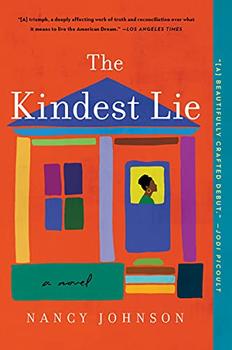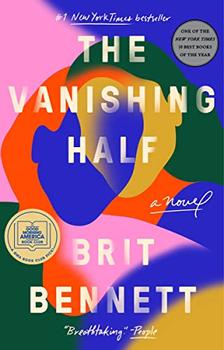Summary | Excerpt | Reading Guide | Reviews | Beyond the book | Read-Alikes | Genres & Themes | Author Bio

The plot of Toni Morrison's first book, The Bluest Eye (1970), focuses on 11-year-old Pecola Breedlove. Ignored and unloved, the product of a dysfunctional family, she believes herself to be ugly because of her dark skin — an opinion reinforced by those around her. She develops the idea that if she had blue eyes and lighter skin she'd be beautiful in everyone else's view. The lives of 9-year-old Claudia MacTeer and her older sister Frieda are included as contrast; they come from a stern but loving home where they are valued — in Morrison's own words in a foreword, an average Black family.
Taking place over the span of a year in the 1940s, the book is divided into four sections, each reflecting a season (Autumn, Winter, Spring, Summer), and each further divided by chapters. At the time it was published, many considered its format "experimental" because of its complexity. The current timeline, for example, is interrupted by long flashbacks as well as foreshadowing of future events. In addition, the narration shifts often; sometimes the story is told by Claudia (sometimes as events unfold, sometimes looking back on them as an adult), at other times by an omniscient narrator. Morrison has stated that this was an attempt to help the reader understand the disjointed nature of Pecola's world. The shifts in perspective usually occur at the start of a chapter, so there's a natural break, and since the focus is altered dramatically (e.g., switching to the trauma Pecola's father endured as a child) the change seems fitting.
In her introduction, Morrison writes that the book is an exploration of "the damaging internalization of assumptions of immutable inferiority originating in an outside gaze" — how outside opinions and "casual racial contempt" can "take root inside the most delicate member of society: a child; the most vulnerable member: a female." She shows this beautifully through the tragedy of Pecola's existence, demonstrating that self-hatred doesn't arise in a vacuum; nearly every character with whom she interacts thinks of her as "ugly" (a word Morrison uses repeatedly to reinforce the concept, rather than employing synonyms). Interestingly, the omniscient narrator makes it clear that there's nothing overtly ugly about Pecola, as in this description of the Breedloves:
"They lived there because they were poor and black, and they stayed there because they believed they were ugly. Although their poverty was traditional and stultifying, it was not unique. But their ugliness was unique. No one could have convinced them that they were not relentlessly and aggressively ugly…the family — Mrs. Breedlove, Sammy Breedlove, and Pecola Breedlove — wore their ugliness, put it on, so to speak, although it did not belong to them."
The novel goes on to point out that it's not only those around Pecola who make her feel less-than, but that "every billboard, every movie" reinforces an ideal image of beauty — blond hair, blue eyes, pink skin — that she can't hope to attain.
Morrison considered the work flawed. She states in the introduction that "…centering the weight of the novel's inquiry on such a delicate and vulnerable character could smash her and lead readers into the comfort of pitying her rather than into an interrogation of themselves for the smashing." Her solution was to "break the narrative into parts that had to be reassembled by the reader," but she ultimately found her attempt unsatisfying. "It didn't work," she writes, "many readers remain touched but not moved." True, I couldn't help pitying Pecola as I think most would; I imagine any time a child is put down to the point of breaking it would engender that emotion. Beyond that, though, the book raised my awareness of how pervasive unrealistic beauty standards remain today and forced me to examine my role in upholding harmful images.
The Bluest Eye has been recognized as a classic, and in my opinion, it deserves that label because its message remains every bit as relevant now as it was when the book was published in 1970. There's little in the narrative that places its action in the 1940s; almost every aspect of it is still common today. With the advent of social media, young girls may feel even more pressure to conform to unattainable (and racial) standards of beauty — and society by and large enables this, although one would like to think things are slowly changing. The Bluest Eye, along with Morrison's other novels, should be required reading for teen audiences, and adult readers will also be given much to contemplate by her works.
![]() This review
first ran in the January 29, 2025
issue of BookBrowse Recommends.
This review
first ran in the January 29, 2025
issue of BookBrowse Recommends.

If you liked The Bluest Eye, try these:

by Nancy Johnson
Published 2022
Powerful and revealing, The Kindest Lie captures the heartbreaking divide between Black and white communities and offers both an unflinching view of motherhood in contemporary America and the never-ending quest to achieve the American Dream.

by Brit Bennett
Published 2022
From the New York Times-bestselling author of The Mothers, a stunning new novel about twin sisters, inseparable as children, who ultimately choose to live in two very different worlds, one black and one white.
A library is a temple unabridged with priceless treasure...
Click Here to find out who said this, as well as discovering other famous literary quotes!
Your guide toexceptional books
BookBrowse seeks out and recommends the best in contemporary fiction and nonfiction—books that not only engage and entertain but also deepen our understanding of ourselves and the world around us.